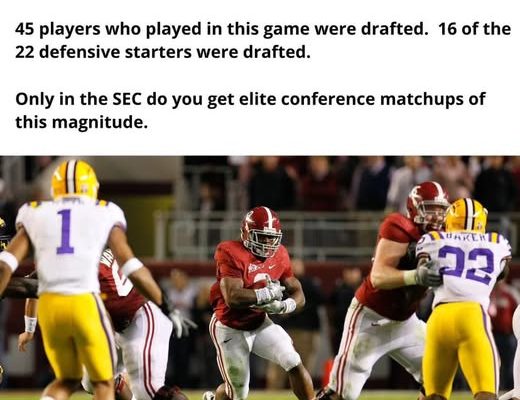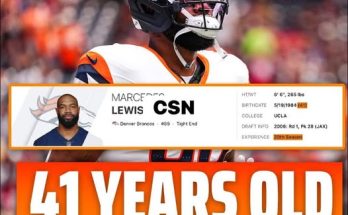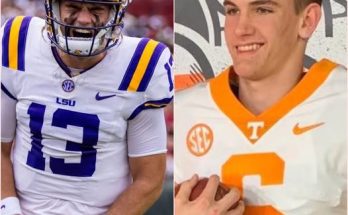There are games that define seasons, and then there are games that define eras. LSU vs. Alabama in 2011 wasn’t just another clash between two powerhouses of the SEC—it was a monumental collision of college football’s most formidable forces, an event so seismic that it altered the way fans, analysts, and even players perceived the sport. Dubbed “The Game of the Century” before the opening kickoff, this titanic matchup between No. 1 LSU and No. 2 Alabama remains, even years later, the single greatest showdown college football has ever witnessed. It wasn’t flashy in the modern sense—there were no 50-point outbursts, no viral highlight reels, no offensive fireworks. Instead, it was a pure, unrelenting symphony of defense, grit, and old-school football—a reminder that the heart of the game lies in willpower, not spectacle.
On November 5, 2011, Bryant-Denny Stadium in Tuscaloosa became the center of the college football universe. Over 101,000 fans packed the stands, their collective anticipation palpable. The SEC West was on the line. The national championship picture hung in the balance. ESPN’s College GameDay had been hyping the matchup all week, and the tension was so thick it felt like history was already being written before the first snap. Les Miles’ LSU Tigers came in undefeated, sporting a dominant defense and a swagger that reflected their head coach’s unorthodox brilliance. Nick Saban’s Alabama Crimson Tide, meanwhile, were a machine—precise, disciplined, and ruthless, with Saban himself a master tactician facing his former program and the school that had once embraced him.
The narrative couldn’t have been richer. Saban versus Miles. Alabama’s suffocating front seven versus LSU’s speed and depth. The two top-ranked teams in the nation, both boasting NFL-caliber talent at nearly every position, each vying to prove who truly ruled the SEC. But what made that night so unforgettable wasn’t just the stakes—it was the style of play. In an era when offensive spread systems were beginning to dominate college football, this game was a throwback to an older, purer version of the sport. It was a battle fought in the trenches, every yard contested, every hit echoing with authority. It was defense not as strategy, but as art.
From the opening whistle, it was clear this would be a game where points would be precious. Both defenses were elite beyond measure. LSU’s secondary, led by future NFL stars like Tyrann Mathieu and Morris Claiborne, blanketed Alabama’s receivers with ferocious intensity. The Tigers’ front, anchored by Michael Brockers and Barkevious Mingo, met Alabama’s bruising offensive line with equal force. On the other side, Alabama’s defense, commanded by All-Americans Dont’a Hightower, Mark Barron, and Courtney Upshaw, swarmed to the ball with terrifying precision. Neither team gave an inch. Every possession was a test of endurance, every play a war of attrition.
By the end of the first quarter, it was evident this wasn’t going to be a high-scoring affair. The game evolved into a chess match between two defensive masterminds. Saban and Miles traded adjustments like heavyweight boxers trading body blows. Alabama relied on its power run game behind Trent Richardson, a future first-round pick whose physicality was unmatched, but LSU’s linebackers met him with unyielding resistance. LSU, on the other hand, used a dual-quarterback system featuring Jordan Jefferson and Jarrett Lee, hoping to keep Alabama’s defense off balance, but the Tide’s discipline and tackling erased any advantage.
The tension grew with every missed opportunity. Alabama’s kicking woes became a story in itself—four missed field goals, each one more painful than the last. Cade Foster and Jeremy Shelley both faltered, their missed attempts haunting Alabama fans as LSU’s defense bent but never broke. The scoreboard remained a stubborn 6-6 deep into the fourth quarter, each field goal representing monumental effort. It wasn’t glamorous football, but it was spellbinding. Every down felt like it could change the game.
When regulation ended in a tie, the crowd was exhausted yet electrified. The game headed to overtime, and the air was thick with suspense. Alabama had the first possession and tried again to convert through the air and on the ground, but LSU’s defense was unyielding. On third down, Alabama’s quarterback A.J. McCarron faced intense pressure, forcing an errant throw. Alabama’s final field goal attempt in overtime was intercepted by LSU safety Eric Reid in one of the most iconic defensive plays of the decade—a soaring leap, snatching the ball out of the air in front of tight end Michael Williams, embodying LSU’s entire identity in one breathtaking moment.
When LSU took possession, their offense needed only to play smart. A short drive set up kicker Drew Alleman, who coolly nailed the 25-yard field goal that silenced the Tuscaloosa crowd. Final score: LSU 9, Alabama 6. No touchdowns. No offensive heroics. Just grit, toughness, and defense at the highest level imaginable.
The aftermath was polarizing. Some fans, accustomed to explosive offensive shootouts, complained that the game was “boring.” But true football purists recognized the brilliance of what they had witnessed. It was football distilled to its essence: discipline, resilience, and the relentless pursuit of perfection. It was a showcase of fundamentals, not flash—a celebration of every unseen detail that makes the sport beautiful.
LSU’s win that night seemed like a coronation. The Tigers had navigated one of the toughest schedules in modern college football history—beating Oregon, West Virginia, Florida, Auburn, and now Alabama, all while playing a brand of football that embodied dominance. The victory secured LSU’s place atop the national rankings and appeared to set them on a collision course with destiny. The Tigers finished the regular season 13-0, and fans began to whisper about one of the greatest teams of all time.
But the story didn’t end there. Fate, in its cruel irony, brought LSU and Alabama together again just two months later for the 2012 BCS National Championship Game in New Orleans. The rematch was billed as a chance for LSU to cement its legacy—or for Alabama to avenge its lone loss. What followed was another defensive masterpiece, but this time, Alabama flipped the script. Saban’s team dominated every facet, winning 21-0 and capturing the national title. That shutout win didn’t diminish the epic nature of the first meeting—it amplified it. The rivalry between these two programs, already fierce, became mythical.
Looking back now, the 2011 regular-season game between LSU and Alabama stands as the purest form of greatness college football has ever produced. It was a defining moment not just for the SEC, but for the sport as a whole. It marked the culmination of an era where defense still ruled the game and where the SEC’s brand of physical, unforgiving football became the gold standard. In many ways, it was the last of its kind—a game played before the spread offenses, tempo schemes, and transfer portal reshaped college football into something faster, flashier, and more commercialized.
Every generation has its own defining moment, and for the 2010s, LSU vs. Alabama in 2011 was that moment. The sheer concentration of talent on the field was staggering—nearly 45 players from that game would go on to play in the NFL. Names like Mathieu, Claiborne, Brockers, Richardson, Hightower, Barron, and Mosley would all become Sunday fixtures. The game wasn’t just a college contest—it was a preview of future professional greatness, an NFL-level battle fought under college lights.
What makes that night even more special, though, is the way it has endured in memory. Fans still talk about it not just as a game, but as an experience—a feeling. It represented something deeply authentic about college football’s soul. It wasn’t about showmanship or analytics or highlight packages. It was about heart. It was about two defenses refusing to yield, two coaching legends locked in strategic warfare, and two teams that embodied everything that makes the sport sacred.
Even Nick Saban himself, years later, has reflected on that night as one of the toughest and most defining games of his career. Les Miles, too, has called it one of the proudest moments of his coaching life. They both knew what it meant. They both understood that on that field, on that night, something transcendent had taken place.
When fans debate the greatest games in college football history, they often cite thrillers like USC vs. Texas in the 2006 Rose Bowl or Boise State’s unforgettable Fiesta Bowl win over Oklahoma. Those games had drama, scoring, and storybook endings. But LSU vs. Alabama in 2011 was something different—it was a masterpiece of a different kind. It was the kind of game that only the SEC could produce, the kind that tests not just skill, but resolve. It was the type of contest that left players bruised, coaches humbled, and fans awestruck.
In an age where college football continues to evolve into a high-scoring spectacle, the 2011 showdown remains a monument to a vanished style of play—one defined by defense, patience, and perfection in the smallest details. It wasn’t meant to entertain; it was meant to test. And in that test, LSU and Alabama both proved themselves worthy of history.
More than a decade later, its legacy endures. Every time two top-ranked teams face off, fans invoke that night in Tuscaloosa. Every time a defensive struggle unfolds, analysts reference “The Game of the Century.” Because no matter how many touchdowns modern football produces, no matter how many Heisman winners fill highlight reels, the essence of greatness will always trace back to that November night in 2011—when LSU and Alabama gave college football its purest, fiercest, and most unforgettable showdown.



